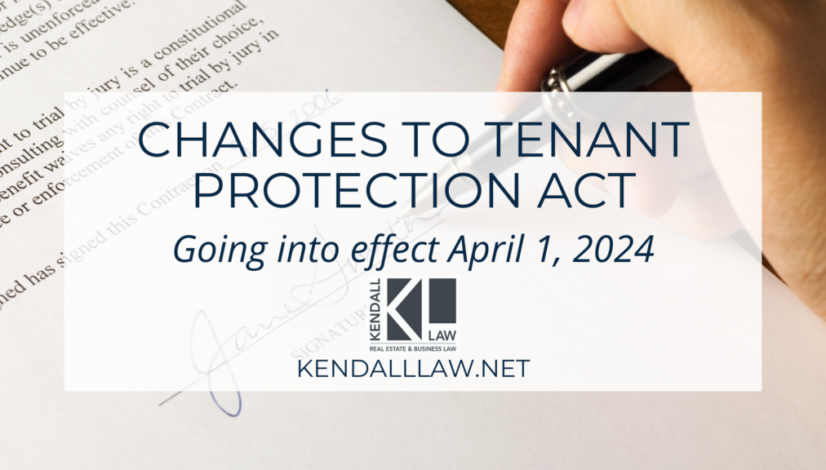Changes to the Tenant Protection Act of 2019 (AB1482)
The Homelessness Prevention Act (SB 567), was just signed by the governor which makes significant changes to the AB1482 Tenant Protection Act of 2019. The changes go in effect April 1, 2024. This article highlights some of those changes.
Substantial Remodel
Under the current law, if you want to terminate for a substantial remodel, you only have to say that in the notice. Under the new law, the notice to terminate must include (1) specific language regarding the tenant on the owner’s intent to remodel/demolish; (2) that if the remodel is not commenced or completed, the tenant will have the right to re-rent the property at the same terms that were in place when vacated; (3) a description of the remodel to be completed, approximate duration of the remodel, or if being demolished, the date which the property will be demolished and; (4) a copy of the permit or permits required to undertake the remodel.
The law also adds that a tenant is not required to vacate a residential real property on any days where a tenant could continue living in the residential real property without violating health, safety, and habitability codes and laws.
Owner Occupancy
The new law adds that for a termination for an intent to occupy, the person moving in must occupy the premises as primary residence for at least 12 months and the intended occupant must move into the rental unit within 90 days after the tenant vacates. If the intended occupant fails to occupy the rental unit within 90 days or fails to occupy for 12 months, the owner shall offer the unit to the tenant who vacated it at the same terms and shall reimburse for reasonable moving costs.
If the intended occupant moves in within 90 days but dies before having lived there for 12 months, this will not be considered a failure to comply.
The intent to occupy cannot be used if the intended occupant occupies a rental unit on the property or if there is a vacancy of a similar unit that already exists at the property.
Clarifying Owner Occupancy Provisions
The new law also defines some key terms to clear any ambiguity in the owner occupancy provisions.
The notice to terminate for intent to occupy now must contain the name or names and the relationship to the owner of the intended occupant. It must also include notification that the tenant may request proof that the intended occupant is an owner or related to the owner. Proof must be provided upon request and may include an operating agreement and other non-public documents.
For the purposes of owner occupancy terminations, the term “owner” is clarified to mean, an owner who is a natural person that has at least 25% recorded ownership interest in the property; a natural person who has any recorded interest in the property if 100% of the recorded ownership is divided among owners who are related to each other as sibling, spouse, domestic partner, child, parent, grandparent, or grandchild; a natural person whose recorded interest is owned through a limited liability company or partnership.
A “natural person” includes any of the following: a natural person that is a settlor or beneficiary of a family trust or if the property is owned by an LLC or partnership, a natural person with a 25% ownership in the property.
Family trust means a revocable trust or irrevocable trust in which the settlors and beneficiaries of the trust are persons who are related to each other as sibling, spouse, domestic partner, child, parent, grandparent or grandchild.
As these amendments to the Tenant Protection Act of 2019 take effect on April 1, 2024, it’s crucial for both landlords and tenants to familiarize themselves with the updated provisions outlined in SB 567. These changes not only enhance tenant protections but also provide clarity in owner occupancy terminations.
If you have any questions or concerns about how these new changes may impact you, we encourage you to contact Kendall Law for personalized guidance on navigating these updates effectively. Reach out to the team at Kendall Law today or call 310-619-4941 to schedule a consultation.
Please note that the information provided at this website is intended for general educational and informational purposes only, and should not be construed as legal advice or a substitute for legal advice from a qualified attorney in your jurisdiction.
Author: Eileen Kendall





